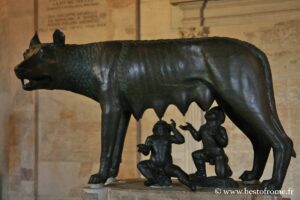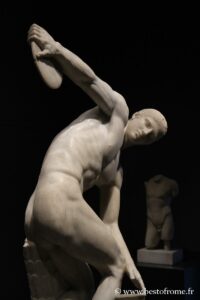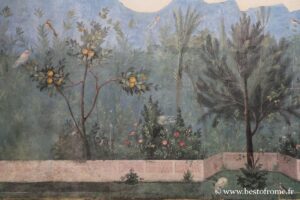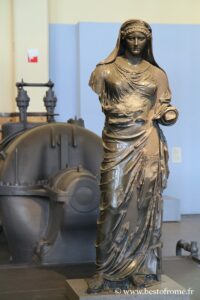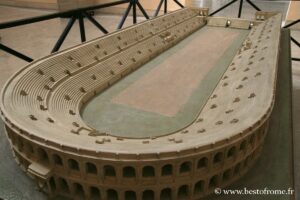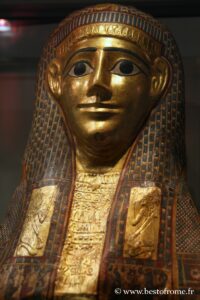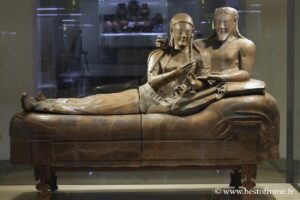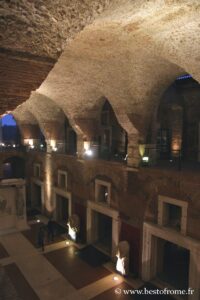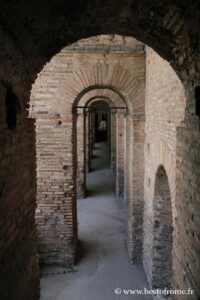Most of the great Roman museums are multi-disciplinary, with collections from various eras, from antiquity to the Renaissance and Baroque for example. These have collections of ancient works and archaeological artifacts, these are the Capitoline Museums, then the Vatican Museums, and the Borghese Gallery to a lesser extent.
A number of other museums are mainly devoted to antiquity and archeology, with above all the National Roman Museum which has several sites in Rome, which brings together the largest collection of this kind in Europe.
Main museums of antiquities in Rome
- Capitoline Museums
Archaeology and antiquity occupy most of the Capitoline Museums, occupying the palaces on the Capitoline Hill and whose underground leads to the ancient Tabularium that dominates the forum, and remains of the Temple of Jupiter. For example, there are busts of Roman philosophers and emperors, famous statues such as the statue of the Dying Galatians, the Capitoline Venus, the Marforio, bronzes including the Capitoline Wolf, the Thorn Shooter, the Brutus Capitoline, the equestrian statue of Marcus Aurelius. - Vatican Museums
The Pio-Cristiano Museum preserves statues, sarcophagi, mosaics and artifacts dating from the 2nd to the 6th century AD, especially from the Early Christian period and from the Roman catacombs.
The Gregorian Profane Museum gathers Greek and Roman works from the 1st to the 3rd century AD, originally to preserve the surplus of the museum after excavations in Rome, Ostia, Veio and Cerveteri.
The Pio-Clementino Museum was developed to house Greek and Roman masterpieces, including the most beautiful statues.
The Chiaramonti Museum has nearly a thousand sculptures, especially busts and Roman statues - Borghese Gallery
Archaeology is not the heart of the museum, but the many ancient works preserved are among the most beautiful, such as classical and Hellenistic sculptures including a Hermaphrodite, a colossal satyr or a famous mosaic of gladiators, Roman statues with a colossal statue of Dionysus or a portrait of Alexander, and Etruscan art. - National Roman Museum
Spread over four sites, this museum houses the largest archaeological collection in the world. It is dedicated to the Roman world.
Palazzo Massimo alle Terme preserves frescoes of Roman villas, such as those of the Villa of Livia, or sublime sculptures and statues, such as a Discobolus or Hermaphrodite, sarcophagi and mosaics, and a vast numismatic collection.
The Baths of Diocletian, in its ancient and later structures, preserve tombs, sarcophagi, steles, an epigraphic section and a prehistoric section and Italic peoples.
The Palazzo Altemps houses important ancient sculptures.
The small Balbi Crypt highlights the archaeological strata of Rome on the site itself.
Other antique museums
- Trajan’s Markets has a museum dedicated to imperial forums in part of the ancient structures of this forum.
- The National Etruscan Museum of Villa Giulia is a very large museum dedicated to the Etruscan civilization
- The Museum of Roman Civilization is dedicated to the Roman world and has many reconstructions of buildings, Rome, battles.
- Centrale Montemartini is an amazing museum of Roman antiquities housed in an old power station.
- The Museum of the Walls of Rome, in the Porta San Sebastiano and part of the walls of Hadrian, is a small museum dedicated to these walls.
- The Museum of the Early Middle Ages is now in Mibac at the EUR.
- The Museum of Ancient Sculpture Giovanni Barracco preserves interesting works.
Map with roman museums of antiquities
Travelers' Map is loading...
If you see this after your page is loaded completely, leafletJS files are missing.
If you see this after your page is loaded completely, leafletJS files are missing.








